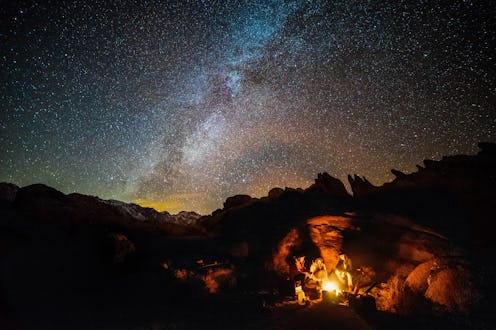Life
This Is What It Looks Like When A Star Dies
Ladies and gentlemen, to break up the depressing news about sad government happenings, I present to you something none of us have seen before and will probably never see again: This is what it looks like when a star dies. It's an incredible event observed by so few, so today is our lucky day. The Hubble Space Telescope recently caught the action, resulting in a stunning image of a red star expelling its outer layers of gas and dust into outer space as it effectively became a planetary nebula. Although this happened about 5,000 light-years away, the picture depicts it in crystal clear imagery. The yellow gasses you see in the image hit a speed of about 621,371 miles per hour as the star died.
Isn't space amazing?
The dead star's technical name is the Calabash Nebula — or, as it's sometimes otherwise called, the Rotten Egg Nebula. It earned its stinky nickname due to its concentration of sulfur; sulfur (when it doesn't get enough oxygen) is known to give off a smell that's not unlike, well, rotten eggs.
Stars can live for billions of years before meeting their demise, which occurs after they've burned their hydrogen and expanded into giant redness. The image was released by NASA and the ESA (European Space Agency), and I have to say, it's quite extraordinary.
Does anybody else feel really tiny now?
Out of all the stars in the sky, we were fortunate to catch a glimpse of this one meeting its spectacular end. And believe me when I say: There are a lot of stars. According to Universe Today, in our galaxy alone, there are between 200 and 400 billion stars. But there might be as many as 500 billions galaxies in the universe. So, multiply those numbers and you get roughly 200,000,000,000,000,000,000,000 stars in the sky.* (Good luck with that one.)
It's amazing to think that this star (may it RIP) is not unlike our own star that we orbit: the Sun. It's also amazing (and terrifying) to think that our sun will one day experience the same death. Sure, it won't be for a long, long time; we've got at least seven billion years before that happens, according to some estimates. But when it does happen, and when the Sun does run out of its fuel, it too will become a red giant, expand to many times its current size, and potentially consume Mercury, Venus, and even Earth in the process.
But we'll all be long gone by then. No worries.
*There's no way aliens don't exist.
